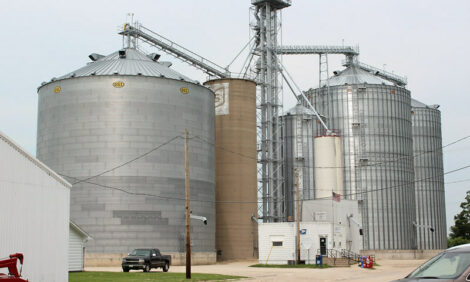



Weekly Outlook: Factors Influencing Corn and Soybean Prices
US - Corn and soybean prices continue to be influenced by a wide array of factors, resulting in a very unstable price pattern. Over the past week, December corn futures traded in a range of $.55. In the past seven trading sessions, November soybean futures traded in a range of about $1.20.|
Extension Economist Purdue University |
On a daily basis, prices have been influenced by changes in the value of the U.S. dollar, changes in crude oil prices, export news, weather and production expectations, and developments in the financial markets. In general, a weakening of the U.S. dollar has been viewed as positive for export prospects and therefore for prices of corn and soybeans and a strengthening of the dollar has been viewed as negative for both. Lower crude oil prices are generally viewed as having a negative impact on prices due to the relationship to the price of biofuels and the profitability of biofuels production. Higher crude oil prices, then, are viewed as positive for corn and soybean prices.
The pace of U.S. corn export sales and shipments continue to lag the pace of a year ago. During the first 2.5 weeks of the 2008-09 marketing year, the USDA report export inspections of only 65 million bushels compared to 120 million bushels during the same period last year. Through September 11, the USDA’s report of export sales showed total export commitments (shipments plus outstanding sales) for the current year at 488.5 million bushels compared to 735.3 million on the same date last year. The 33.6 percent decline in commitments compares to the USDA’s projection of a 17.5 percent drop in exports for the year. Sales to most of the largest buyers of U.S. corn – Japan, South Korea, Taiwan, and Mexico – are lagging the pace of a year ago.
The early pace of U.S. soybean exports is lagging the pace of a year ago, but unshipped sales are larger than sales of a year earlier. In the first 2.5 weeks of the year, export inspections totaled 15 million bushels, compared to 20 million in the same period last year. However, as of September 11, the USDA reported total export commitments of about 344 million bushels, compared to 317 million on the same date last year. The USDA projects a 13.4 percent drop in exports this year, but early commitments exceed those of a year ago by almost 9 percent. Japan and South Korea account for much of the year-over-year increase.
World wheat, coarse grain, and soybean production are expected to be record large in 2008-09. Wheat production is expected to be large enough to result in an increase in year ending stocks for the first time in four years. Wheat production concerns center around Argentina and Australia where dry weather continues to threaten crop development. Earlier this month, the USDA lowered the production forecast for Australia by 12 percent and the forecast for Argentina by 7 percent. World coarse grain stocks are expected to increase modestly. The increase in soybean stocks is dependent on the size of the 2009 South American harvest.
For the near term, much of the production focus will continue to be on the size of the U.S. corn soybean crops. For now, it appears the late maturing crops will not impacted by a wide spread early freeze. However, the drop in yield and production for both crops earlier this month may point to a further decline in October. Since 1970, there has been a modest correlation between the change in the production forecast in September and the change in October. The correlation is stronger for corn than for soybeans. The October report, however, will contain more complete information about planted, and therefore harvested, acreage of both crops.
The developments in the financial markets may have implications for the demand prospects for corn and soybeans. If problems in those markets lead to weakening U.S. and world economies, the demand for both food and energy could also weaken with direct implications for corn and soybean prices. Similarly, any evidence that those financial issues have been adequately addressed and that the worst is over would suggest a more stable demand scenario.
For now, both corn and soybean prices appear to be in a board trading range. For December 2008 corn, that range extends from about $5.00 to about $6.25. The current price is very near the middle of that range. For November 2008 soybean futures, that range extends from about $11.00 to about $13.00. The current price is slightly below the mid-point of that range.


